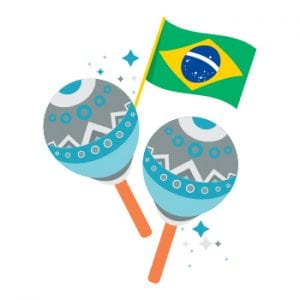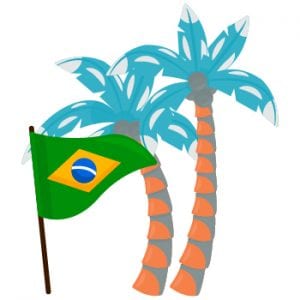Piraha Language

The words we use connect us with other people and to the world. If we use absurd words for others, it will affect our relationship with them. You might have heard about controversies in humans or government systems. But do you ever imagine controversies of languages? Today, we are going to discuss the most controversial language in the world, i.e. Piraha language.
Piraha has been the center of debate in linguistics for a long time now. It is because there are claims not to exhibit recursion in this lingo. This lingo pretends to be a universal human language. Such claims make it the center of attention for many linguists. There is so much to explore about this unusual and unique language.
Let’s begin by exploring the ancient history of the Piraha language!


Origin and History
This lingo gained much more academic and public interest after the publication of Dr. Daniel Everett’s book named ‘don’t sleep there are snakes’. Piraha is the indigenous language of the isolated Piraha people of Amazonas, Brazil. Out of all the Mura languages, Piraha is the only surviving dialect. It is also the direct descendant of the Mura. The long language diversity of this group has still left links with people that make it a living lingo. All other languages have been extinct for the last few centuries. It is because most of the groups of Mura people have shifted to Portuguese. Though its neighboring languages have been extinct there is no risk of extinction to this language because people use it vigorously.
This language was classified as a member of the Mura family by Nimuendaju in 1982. He was the first person to create an association between the two groups, referring to Piraha as Mura-Piraha. Since then, the history of the two groups has bound to remain together, making it usual to think of Piraha as the latter-day survivors of the ancient Mura nation. Another person named Henrichs classified it as tonal. Everett, a specialist in linguistics, did the analysis of this lingo in numerous works. He further stated that the whistles follow tones but not a simple tonality that establishes the meaning.
What is Piraha?
Piraha is the term given by the regional population to the people living near the Maici River. They classify them with this word. It also represents their identification when other indigenous groups are around them. According to some linguists, about 400 people belonging to this tribe are still alive. This also indicates the approximate number of speakers of this lingo, which is 380-400. The limited number of its speakers causes no threat to its extinction. Because the Piraha community is monolingual, there is no chance that this lingo will phase out like others were replaced by Portuguese. If Dr. Daniel Everett had not performed his extensive research on this language, we might get no knowledge about this lingo. This is also the reason behind the limited interaction of this tongue with the world.
Piraha Grammar
In terms of grammar, the vocabulary of this lingo is very concise. There are only a few or no words for several concepts that exist widely in other languages. It has only 10-12 phonemes which include seven consonants and three vowels. Having such short and concise grammar, it is known to be the simplest lingo in the world. For the woman, it is much easier because the woman uses one consonant less than the man. In addition to that, this language is far more conceptual because there are no fixed words for numbers or colors.
An example of this is that the words like hói or hoí when said in different tones, mean small quantity and large quantity. Moreover, there are no fixed terms for colors so if they want to say ‘green’ they simply relate a sentence with it e.g. ‘it looks like grass’. In addition to that, it uses one word to call both mother and father.


Universal Grammar
On the nature of languages, universal grammar has grown to be the most prominent hypothesis in the past 50 years. By bringing it on the right track, Piraha teaches us that Universal grammar should be seriously reevaluated. The concept of language as a cultural tool makes it simple to comprehend why, after even 100 years of modern linguistics studies and field research, we are still losing a non-controversial proposal on the nature of Universal grammar. Piraha uses appositive structures in which two coreferential NPs occur adjacently.
Moreover, since there is not a lot of information available on this lingo, if we want to learn about the grammatical structures of sentences, we have to search it thoroughly. We may be able to find metrical constituent structures in Piraha phonology. The speech of this language sometimes occurs as separate sentences. All the syntactic structures are endocentric in it. Furthermore, there is no doubt that this tongue has phonetic rarities and cultural constraints on grammar.
The Unique language of the world Piraha Brazil
Being the unique language of the world, Piraha focuses more on the present. This diverse lingo has significant importance in cognitive science. As it is the culture there, people do not even care about the past. If the people living there do not see something, they will assume that it does not exist. For example, if they see a bird on a tree and later it flies away to another tree, they would just say that the bird is ‘xibipio’, which means going out of existence.
Another thing is that it has cultural constraints against generalizing beyond the present, which inhibits some of the number words. Although it is a natural language, the culture and psychology are deeply connected, which gives it some status of being a unique one. The Center is embedding quotations in which dependency exists between materials on two sides of some reported speech. Furthermore, the controversial status of the lingo has made it more famous. Let’s study its controversy more!
Controversial Claim
Among the Amazonian languages, this lingo is most notable as the subject of controversial claims. According to the Department of Brain and Cognitive Sciences, it teaches us about the human tongue and the human brain. To fulfill the goals of this lingo, semantic and discourse structure is conceptually independent of syntactic structure. In the controversy of this language, it is claimed that recursive structures are not necessary tools for human syntax because there is no evidence for recursion. It is a rare and mysterious language because some consider that it misses the universal characteristics of languages, i.e., recursion.
The most pervasive theory to date is that all languages have recursion, but Piraha was seen without recursion. There are chances of the absence of recursion. The term recursion is also called nesting. It refers to embedding sentences and clauses within a single sentence. It involves creating a long sentence using one short sentence. Recursion is the most compelling universal hypothesis.
Result of Controversy
Daniel Everett claims that if a language faces the absence of recursion, then it falsifies the basic assumption of modern Chomsky N linguistics. The role of recursion in natural languages is very wide. The idea of recursion linguistics is based on the idea that this could go on forever. Cognitive technology and cultural constraints on grammar also keep track of the cardinality of large sets across time, space, and changes in modality. Extremely limited clause structure does not allow nested recursive sentences.
The linguistic universals point towards the deep properties of the cognitive mechanisms supporting language. The wide issue was held by the Cambridge University Press, SIL International, and the Brazilian Government when no other solution could be found. Noam Chomsky concluded that there is no such language without recursion. However, he said that certain language characteristics are innate to humans. It means they are genetic but not learned.





